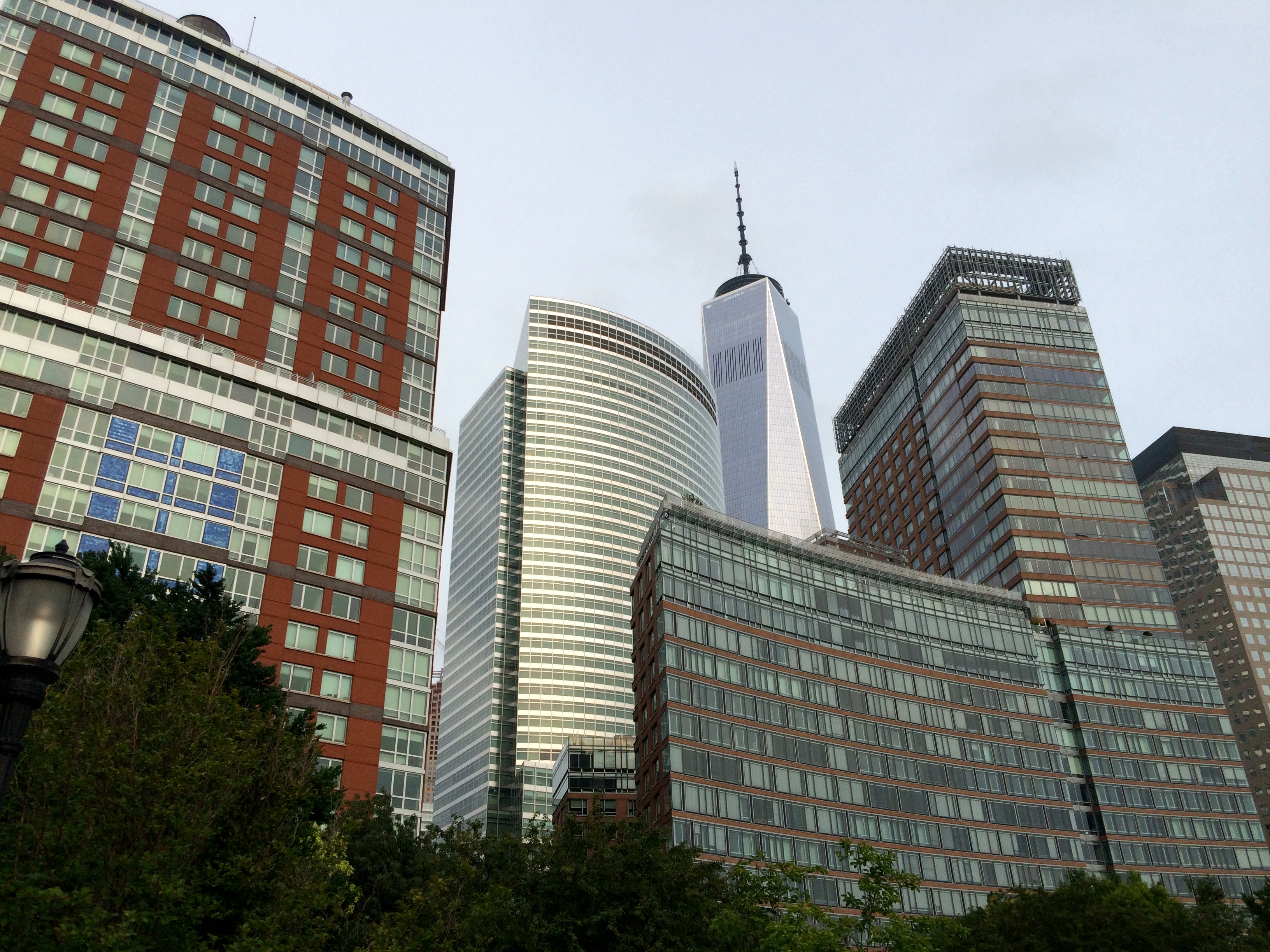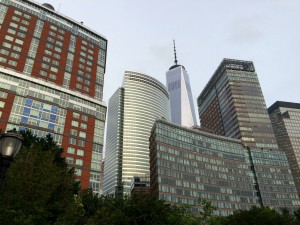Hello, everyone! My name is Isabel and I’m a rising senior at Gallatin, concentrating in film and cultural anthropology with a minor in documentary film from Tisch. I’ve been working on pre-production for my documentary 00:00 (which is definitely a working title). I got back July 9th from a month where I was without internet or much contact with the states, so that put a hold on things, and I’ve been really laying out my ideas for this bizarre documentary I’m making.
Basically, 00:00 is a experimental/experiential doc that asks the question: what if you could be in more than one place at one time? More realistically, it will focus on experience and perception of multiple places around the city at the exact same second. The idea came to me when I was at a broadway show and as the show started I thought about all the other shows that were starting at the exact same time (roughly) all around me, some within 200 feet of where I was sitting. It just made me think about all the places it’s possible to be, and how we choose where to be at any given time. Logistically, filming will span about 6 hours with 5-7 synced cameras in different locations, filming on a set schedule. It’s hard to explain using words, and sadly I don’t have visual representation. But if you can imagine camera persons A, B, C, and D, I might be able to explain it. If you want to read it, I’ll put it below in italics.
Person A goes to battery park and starts filming at noon, Person B goes to central park and also starts filming at noon. Person C goes to Times Square and begins to film around 12:10, and Person D goes to the Hudson river and starts to film at 12:15. Since I’m using DSLRs, filming can only last 12 minutes without cutting the camera, at which time the person will pick up and move to a new location, and start filming at the new designated time. So Person A will film in the area until 12:15 and then walk to the World Trade Center memorial, and begin filming at 12:20. Person B will stop filming in central park and travel to grand central, where they will begin filming at 12:35. Imply a similar travel trajectory for C and D. Add a couple more camera people to fill in these holes and have everyone go for an hour. Then we all break for 4 hours to regroup, recharge, and then go back out to film on a similar schedule for the night footage. There may also be less of an overlap at times, as little as 5 minutes.
I understand how unpredictable the locations are going to be, and in many ways I’m fine with that. As long as everyone starts filming at their designated time, no matter where they are (stuck in the subway, walking to a new place, caught in car traffic), it’ll still be an observable experience. I’m hoping to be very clear and open about the fact that it’s a documentary that’s being filmed—meaning I’m expecting people to notice the camera or even say something to the camera person. In many ways it’s turning out to be a big logistical experiment. If I had unlimited money, it would be amazing to hire people around the world to follow a similar schedule. I also often wonder what my oldest friend, who lives in Chicago, is doing at any random moment, as I live my life in New York. If this goes well enough, maybe that could work out, but who knows! For now I’m just trying to find 6 people who are all free on the same day. Right now it’s looking like August 7th it’s the magic date.
The most important piece of the puzzle I’ve been tackling is figuring out and then scheduling the actual filming locations. While each camera person has more of a general location than an exact frame to duplicate (and at each location they follow whatever interests them or catches their eye), I’m still very worried about the doc being boring. Especially since I’m limited by the syncing of time, I can’t cut to a different time to keep it interesting.
One of my inspirations right now is the 2010 film The Clock, which (copied from the MoMA website): “The Clock is a cinematic tour de force that unfolds on the screen in real time through thousands of film excerpts that form a 24-hour montage. Appropriated from the last 100 years of cinema’s rich history, the film clips chronicle the hours and minutes of the 24-hour period, often by displaying a watch or clock.” I haven’t even seen it (I’ve talked to many people that did see it), but generally I’m just keeping its ideas in mind—broad scope, potentially slow moments, and the payoff of a logistically difficult idea.
I’ll put in a photo I took the other day of lower Manhattan, so it’s not totally void of images, but the area around the World Trade Center is definitely on my locations list. I love the way the buildings stack on top of each other like this.
I think half of the fun/challenge of this doc is that I’ll have no idea what footage I have until I get everything into the editing room the day after. I’m trying to be less invested in the literal content of the footage so that I can be surprised no matter what comes back. See you all on the other side!


Hi Isabel,
I find your project really interesting, and I’m excited for the results. I saw the Clock when it was at Moma and loved it. I’m really intrigued by how you are looking at simultaneous moments through the medium of film – which is inherently linear.
Have you seen Slacker by Richard Linklater? Linklater deals a lot with time in his films – and Slacker is a sort of day-in-the-life film that follows one character briefly and then randomly switches to someone new. Though its not explicitly about different things happening at the same time, it is exploring similar questions. Each character switch makes you think about what that character was doing before they came into frame – and how their story was unfolding while you were watching someone else. I would suggest watching it if you haven’t yet – it may give you some inspiration!
I don’t think you should worry about it boring! Though the footage itself may not be inherently exciting, depending on how you edit it I’m sure you can keep the viewer engaged. You said you are limited to syncing of time so you can’t cut to keep it interesting – but I wonder if there is a way you can get around that? Either by cutting very very frequently between each location or by overlaying the footage to create a somewhat abstract idea of place. Or you could see if you can get more people to film for you. Do you only want to use DSLR footage or would you be open to people filming on their phone?
Good luck with the rest of the project, I’m sure the editing process will be exciting!
Maya
Hey!
This is a fascinating idea. I have the same thoughts too sometimes and I often wonder what’s happening in other places at the exact same time that I’m doing things. I also like the idea of being able to be at multiple places at the same time through your documentary, and it can show both the advantages and disadvantages of being divided over multiple places in town. Who knows what you might run into at all those different locations!
I have a few questions about the visualization of the documentary. Would you show multiple locations at the same time on your screen, or would you cut from one place to another? Both could be interesting. If you show multiple locations at the same time, the audience can make a choice what location to focus on and all have a unique experience. If you cut from one place to another, there could be a narrative happening between locations. For example, if you follow a homeless man in one place, and follow a business man in another, this can have an interesting effect, and almost a visual dialogue between the two.
If you want to do something extra with audio, you could maybe have someone record a conversation at the exact same time, which can add a new layer. I was also wondering whether you want to give the people who’ll be filming certain assignments/tasks when going out to film or not. You wrote that you’re worried it will be boring, and if you don’t give people any direction but just let them shoot at random, they might end up having nothing really except a location and its passers by?! If you tell people to follow certain types of New Yorkers, or to look for a specific theme/situation (like ‘poverty’ or ‘sadness’) you might end up with more exciting footage.
Good luck!!!
Joosje